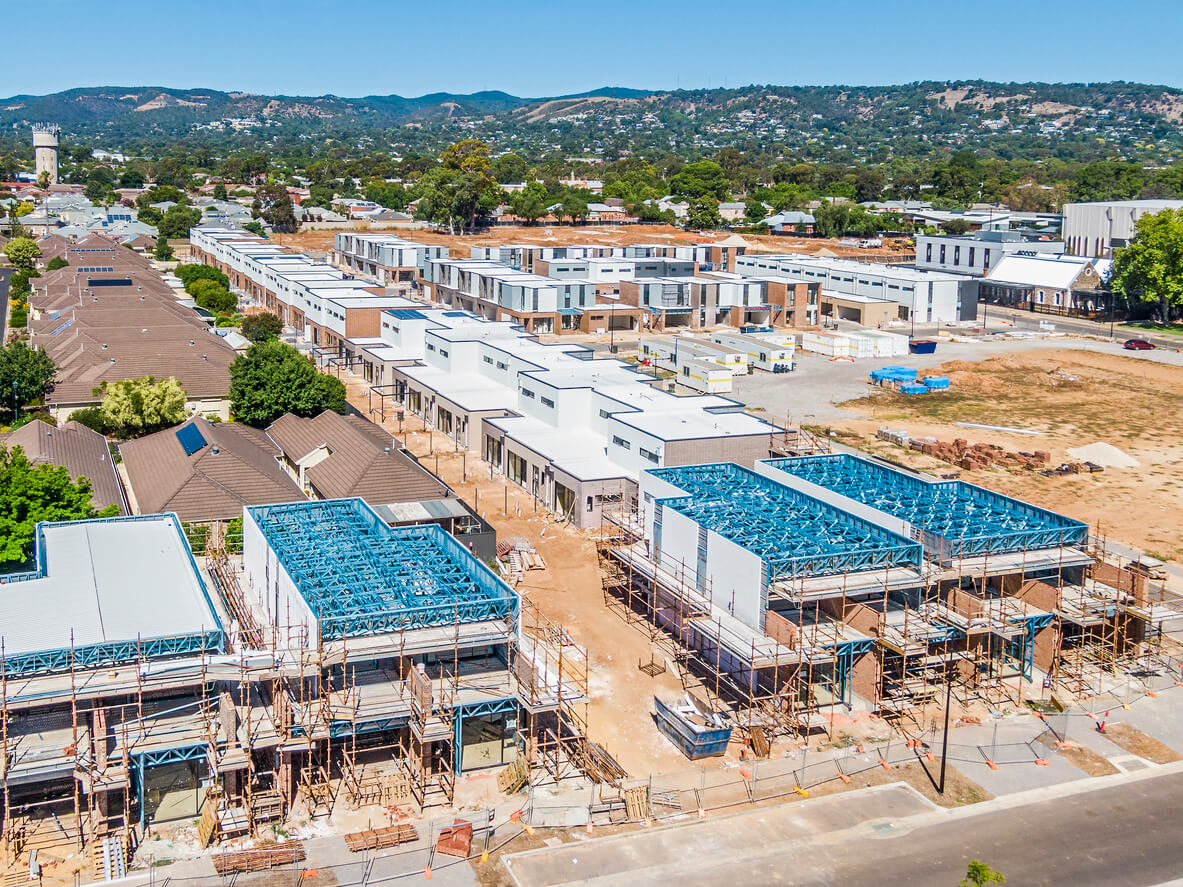What Are the Different Types of Land Use Zones?
Land use zoning is a system used by governments and local councils to classify parcels of land. Each land use zone establishes the land uses that are permissible (with or without consent) or prohibited in a particular location. Traditionally, land use was defined by six primary groups:
- agricultural,
- residential,
- recreational,
- commercial,
- industrial, and
- transportation.
Within each group land use was further defined or limited by specific zones. This meant that land identified for residential use would have specific areas zoned for low-, medium-, and high-density developments.
This is still true, but state governments in Australia each have their own planning scheme in place, and these are updated periodically. So, land use groupings, zone types, and permitted development for each zone type differ from one state to the next. As a developer it is important to understand this. Because even though you can apply to have a tract of land rezoned, the process can delay your development considerably, with no guarantee that your application will be approved.
Land Use Zones by State
As mentioned earlier, each state has their own planning scheme and land use zones. Any similarity in names used in groupings or specific zones does not indicate that the permitted developments are identical. Victoria, ACT, NSW, QLD, and the Northern Territory have documents that summarise the main groupings for the different land use zones, along with the specific zones under each grouping. The remaining states don’t yet have these summaries, making it more challenging to find the specifics of land use zones in WA, SA, and Tasmania.
Residential Zones (VIC, ACT, NSW, QLD, and NT)
The naming conventions for the zones falling under “Residential” vary considerably, but still tend to emphasise low- to high-density dwellings. Low-density dwellings typically mean a single, low-rise property on a parcel of land. Medium density usually allows multiple dwelling low-rise developments, such as dual occupancy homes, duplexes, and townhouses. High-rise apartments are limited to high-density residential zones. Permitted uses vary considerably across states.
Some residential zones include provision for certain community facilities such as neighbourhood shops and childcare centres.
Industrial Zones (VIC, ACT, NSW, and NT)
Called Industry Zones in Queensland, this zone grouping naturally accommodates various forms of industry, but with specific zones for light, medium, and heavy industry.
Commercial Zones (VIC, ACT, and NT)
Called Business Zones in NSW, and Centre Zones in Queensland. These zones all allow some type of business activity, with the different zones determining proximity to transport infrastructure, and maximum leasable floor space. Victoria has three different commercial zones, NT has four, while ACT, Queensland, and NSW have 6-8 different commercial zones. Some limit business activity to small shops, cafes, bars, restaurants, and office space, while others allow hotels, shopping centres, garden centres, and in some cases, warehouses. A mixed use commercial zone allows for a mix of shops, offices, and apartments.
Recreation Zones (NSW, QLD, and NT)
Called Public Land Zones in VIC, and Parks and Recreation Zones in ACT. These zones provide for recreation facilities such as indoor and outdoor sporting facilities and fields, clubhouses, community houses, and parks. There is differentiation between public and private recreation land use.
Other Land Use Zones
The above are the main groupings for land use zones where there is an overlap and similarity between states. But there are still a number of land use zones that are distinctive or not properly defined. These include:
- Transport and Services Zones (ACT)
- Special Purpose Zones (VIC, NSW)
- Tourism Zones (QLD)
- Non-Urban Zones (ACT)
- Rural Zones (NSW, NT)
- Other Zones (QLD, NT)
- Environment Protection Zones (NSW)
- Environmental Zones (QLD)
- Waterway Zones (NSW)
- Infrastructure Zones (NT)
Why Knowing the Types of Land Use Zones Is Not Enough
Knowing the main zone groupings and types of land use zones that fall under them does not tell you all you need to know. Height and density limitations for medium-density residential zones in ACT, NSW, and NT vary considerably, along with what developments are permitted in each. Archistar’s all-in-one property platform simplifies the process of choosing property that is suitably zoned for your development. Consolidating land use zones and planning rules from thousands of sources, you can immediately see:
- The actual land use zone type
- Frontage restrictions
- Height restrictions
- Floor space restrictions
and more. You are even provided with a link to the planning schemes page of the relevant council’s website. Which is useful if you think you need to apply to have a parcel of land rezoned. Schedule a demo of the platform to see these features in action, and we will even assess whether Archistar is the right solution for your needs.


